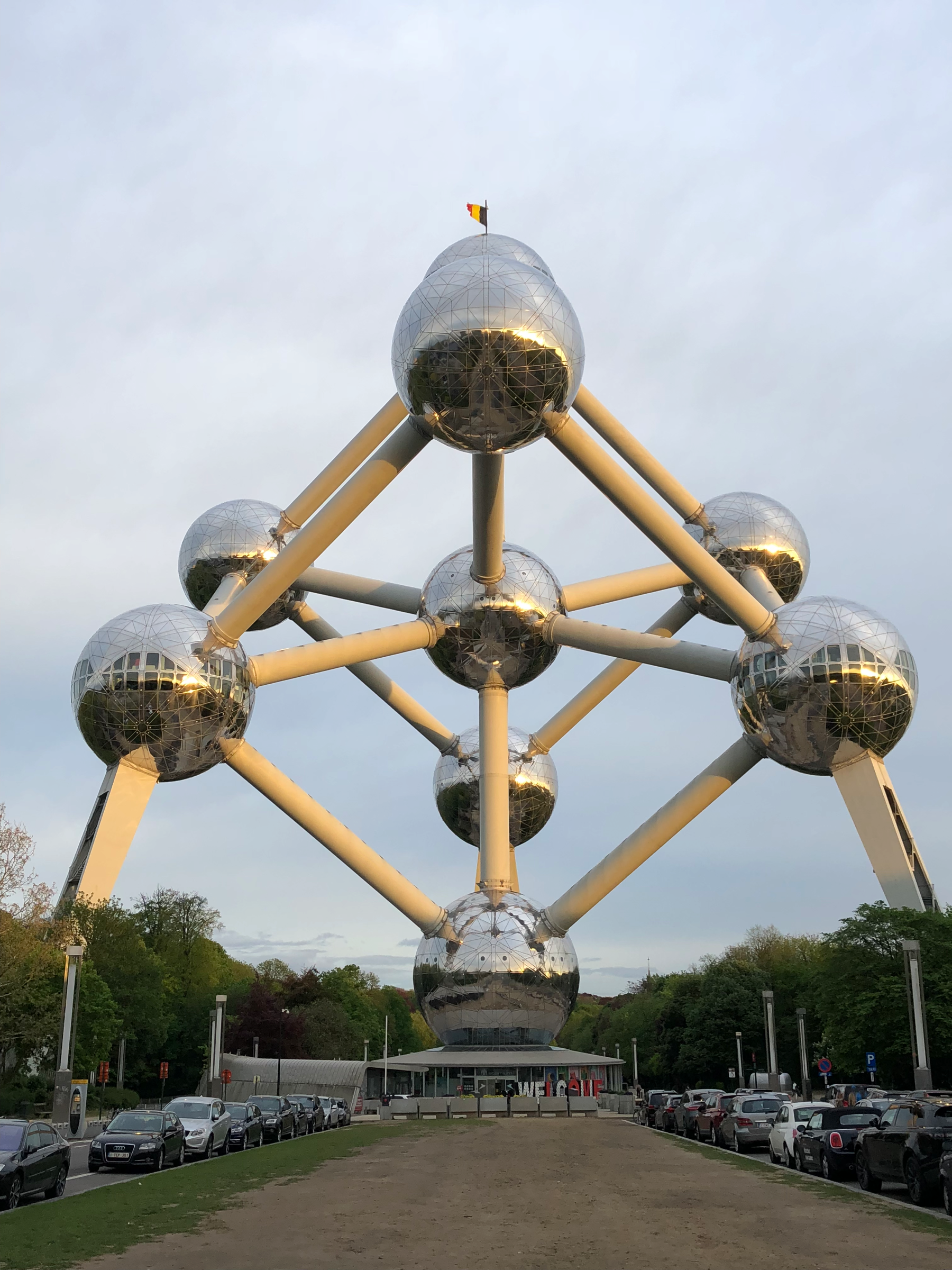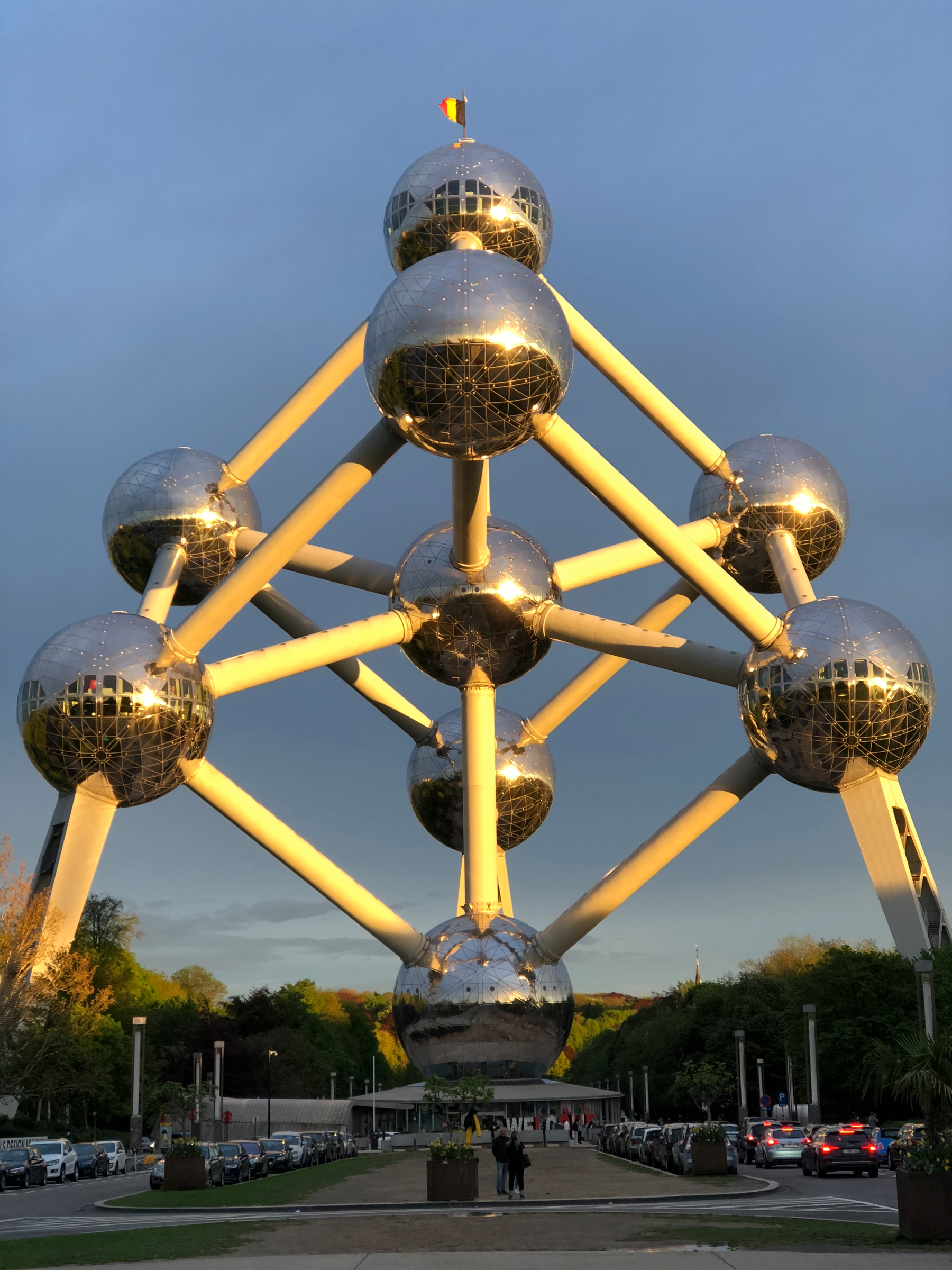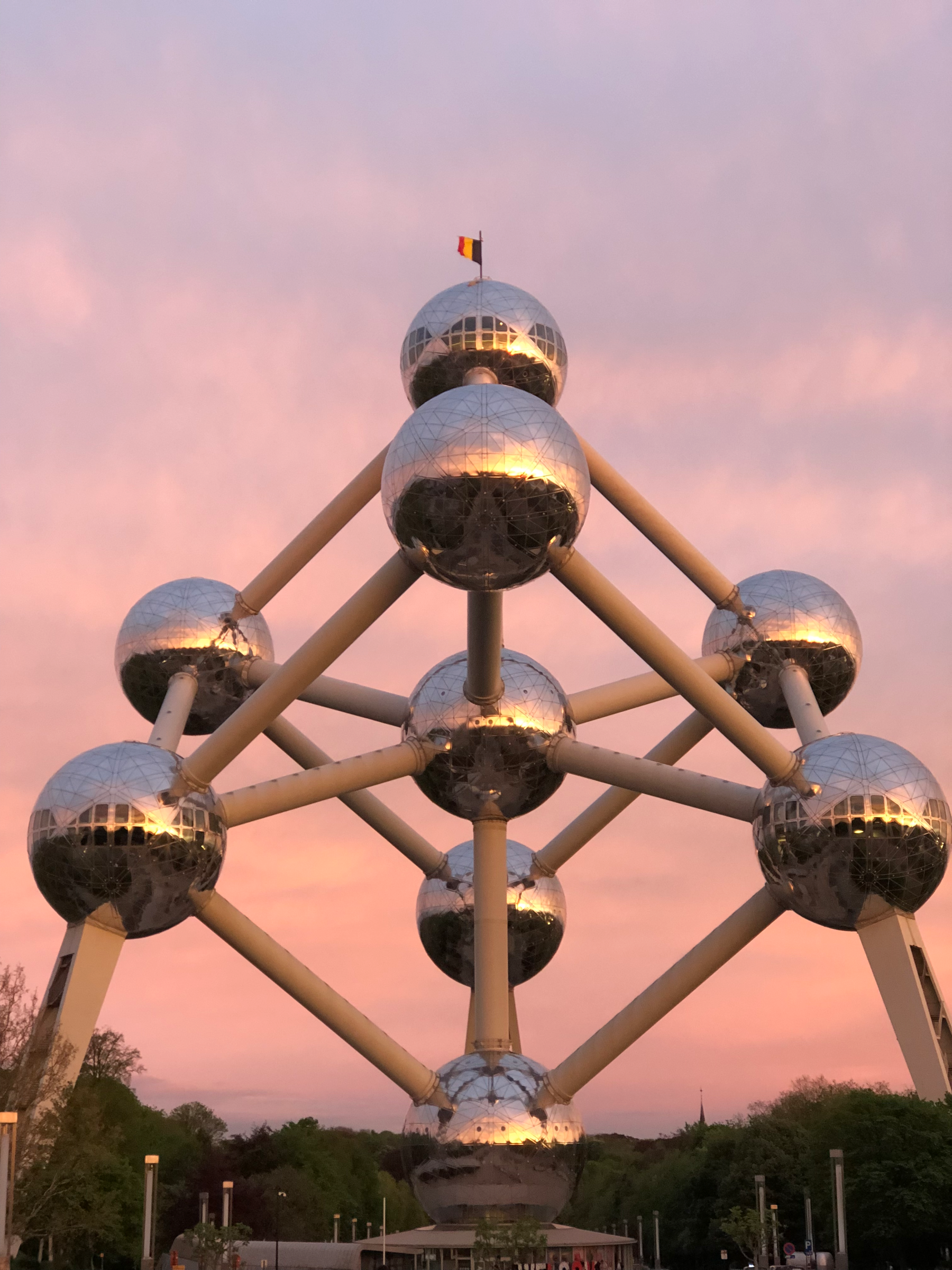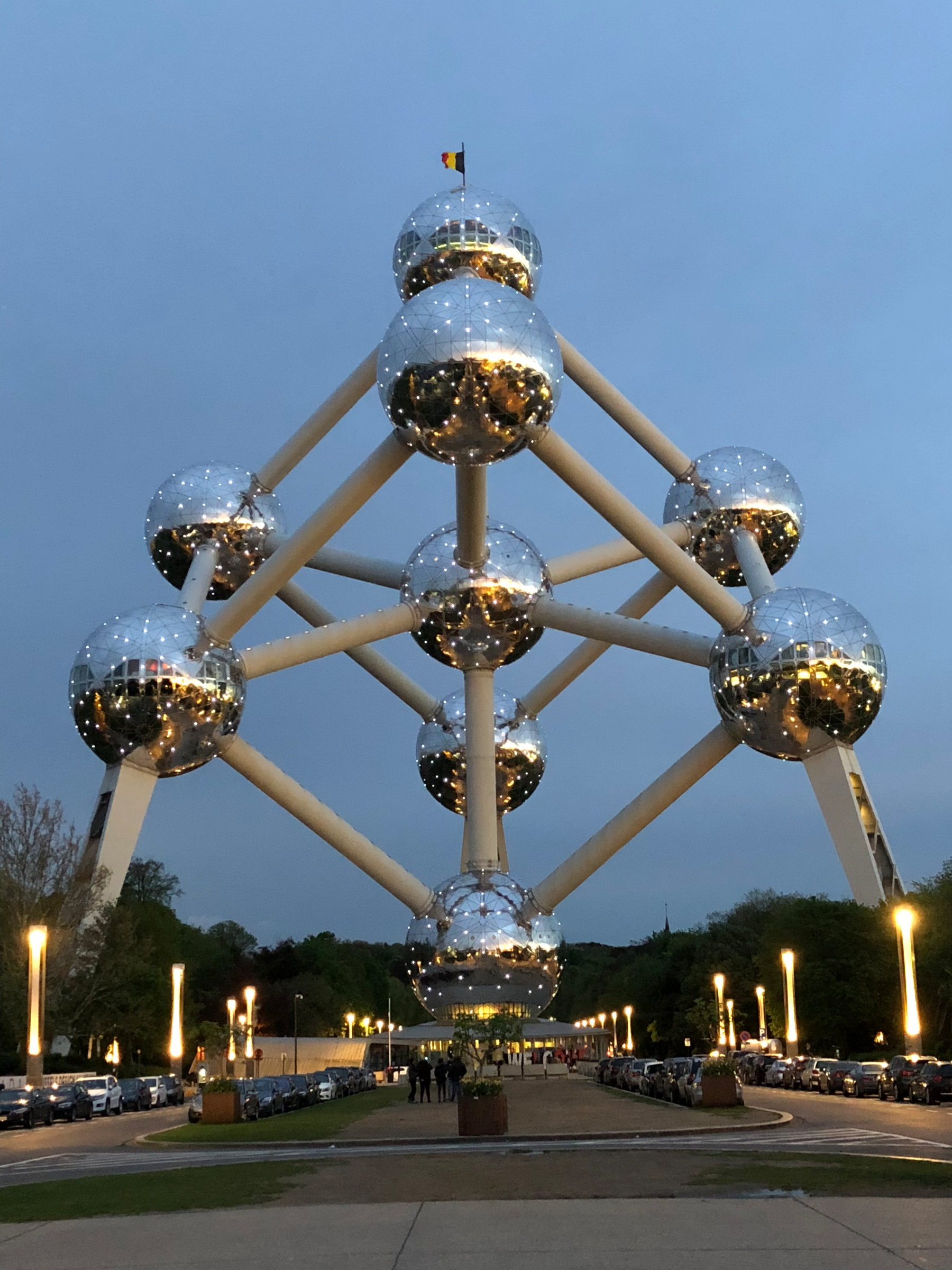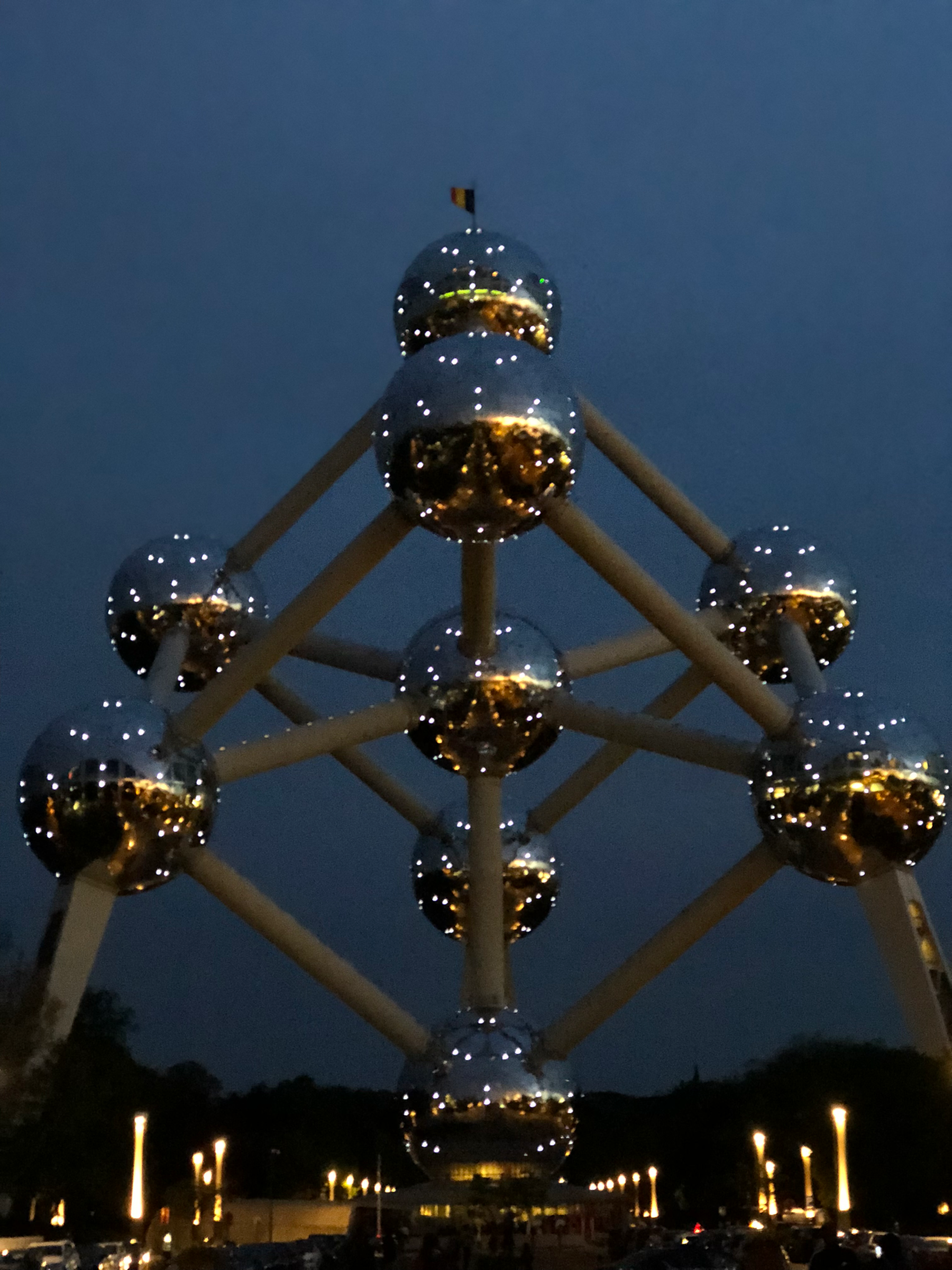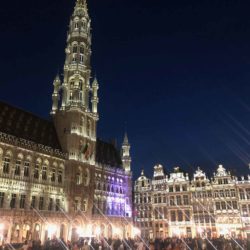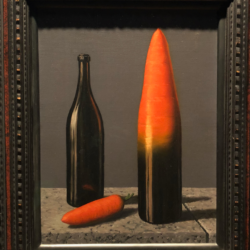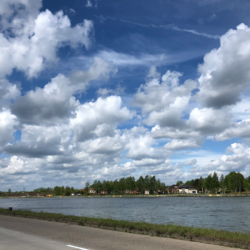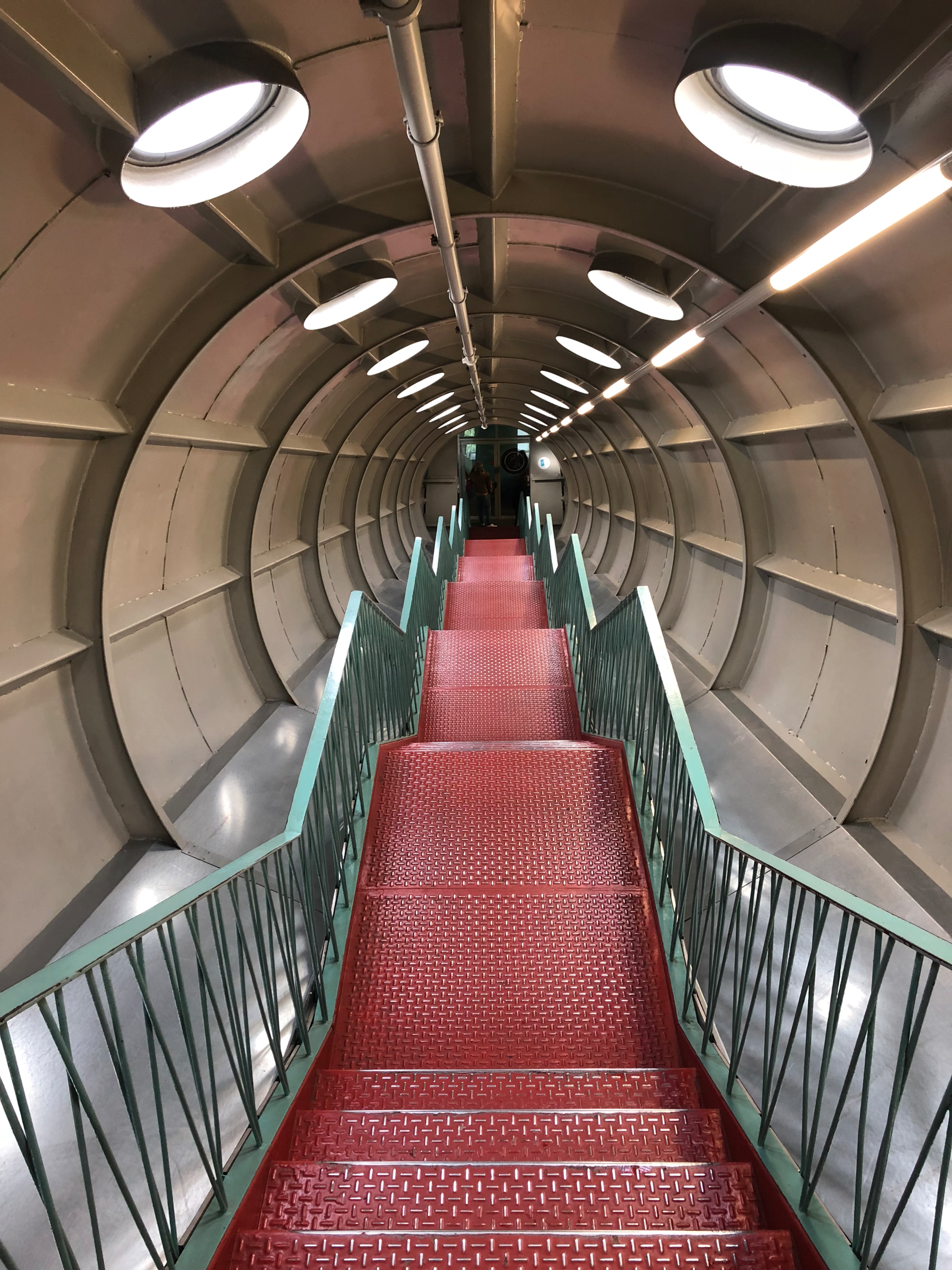
When you find yourself leafing through a guidebook, “______ is the symbol of the city” is a phrase that often pops up, but what exactly does this mean and for whom is this monument/museum/natural wonder a symbol? Is it just a gimmicky title bestowed upon an attraction in an effort to drive tourists towards a location? New York has the Statue of Liberty, London has Big Ben and what would Pisa being without its leaning tower? How widespread must an attraction’s fame become before it can officially be considered a symbol of a city? I certainly don’t think about the Statue of Liberty very often and I would venture to say most New Yorkers don’t either. Personally, it doesn’t symbolize either the city or my experiences here at all, but there’s no question that the Statue of Liberty is famous the world over. New York has poured a lot of time (and money) into branding the Statue of Liberty as our symbol and by many metrics they’ve been successful. But what of a symbol where the effort to brand it hasn’t harvested as many fruits?
Brussels has been trying to market the Atomium as “The Symbol of Brussels” for decades now, but has the promotional push worked? When someone says “Brussels,” do you immediately think of the Atomium? Do you even know what the Atomium is? (The tourist office even calls it “The Eiffel Tower of Brussels,” and if you have to reference your symbol in relation to another city’s symbol, you’re probably in trouble!) Let’s take a look at the Atomium’s history, its current status as a tourist attraction and allow the chips to fall where they may.
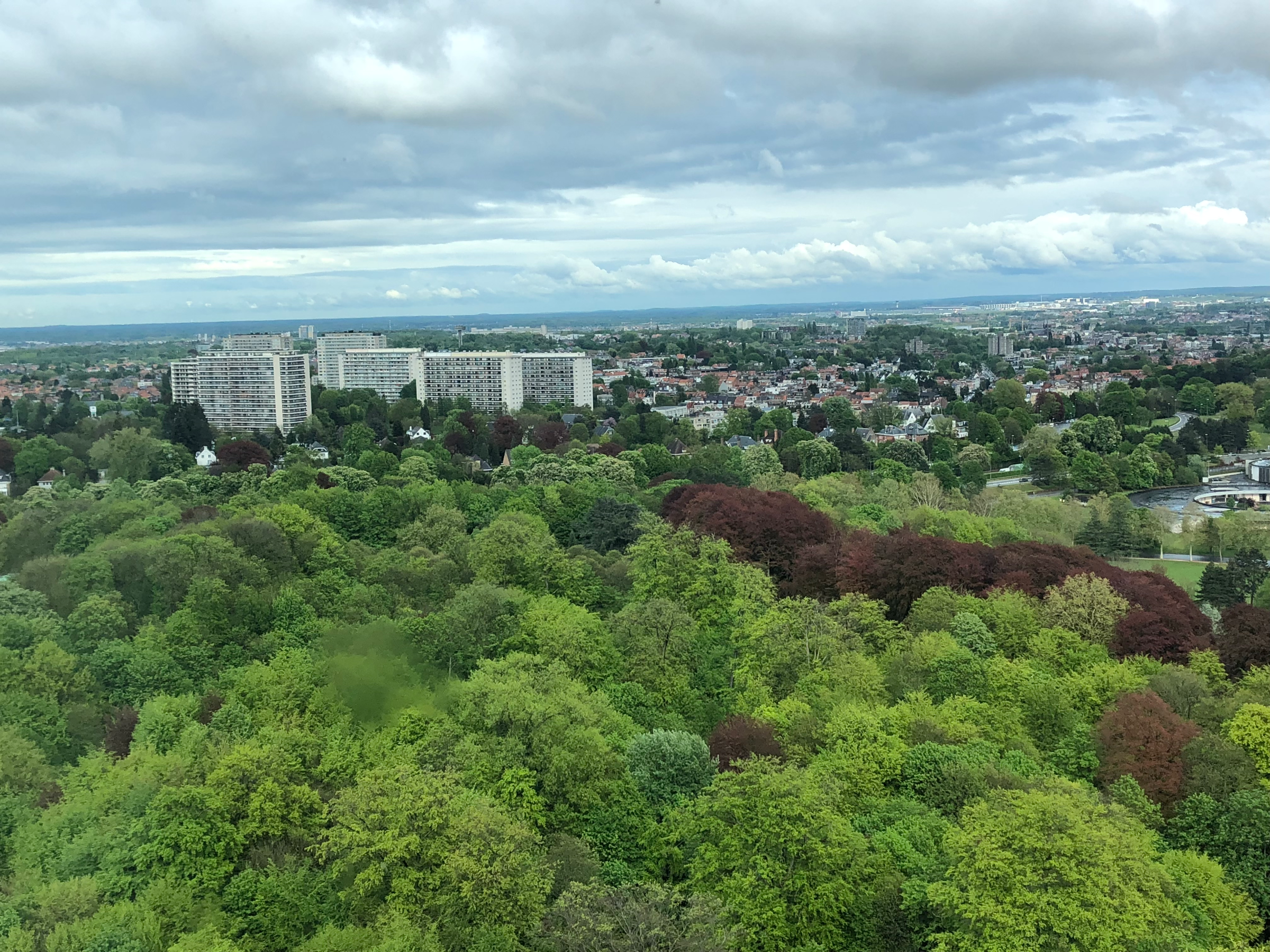
The Atomium is located in the district of Laeken, northwest of the city center. It’s much too far to walk there; head down to the metro and take the 6 train to Heysel/Heizel, which is the second to last stop on the line. From there the Atomium is a mere five minute walk away. The Palais Royal/Koninklijk Paleis may be located in Central Brussels, but that building is only used for state functions and to house government offices. The royal family’s grand abode is actually in Laeken, and while their residence is off-limits for tourists, the surrounding royal gardens open up to visitors for three weeks every spring.

Since the 1880s, Brussels has acted as host to seven World’s Fairs and the Heysel Plateau was the home for both Expo 35 and Expo 58, the latter of which was the impetus for the construction of the Atomium. Above you can see the Palais des Expositions, which was designed by Belgian architect Joseph van Neck in an Art Deco style for Expo 35. The World’s Fair was attended by 20,000,000 visitors and contained pavilions from 24 countries. World governments would spend millions of dollars to create an exposition space that would symbolize their nation and boast of its achievements; the pavilions were torn down after each fair ended and the enormous cost is one reason I suspect these fairs haven’t continued in a similar fashion today.
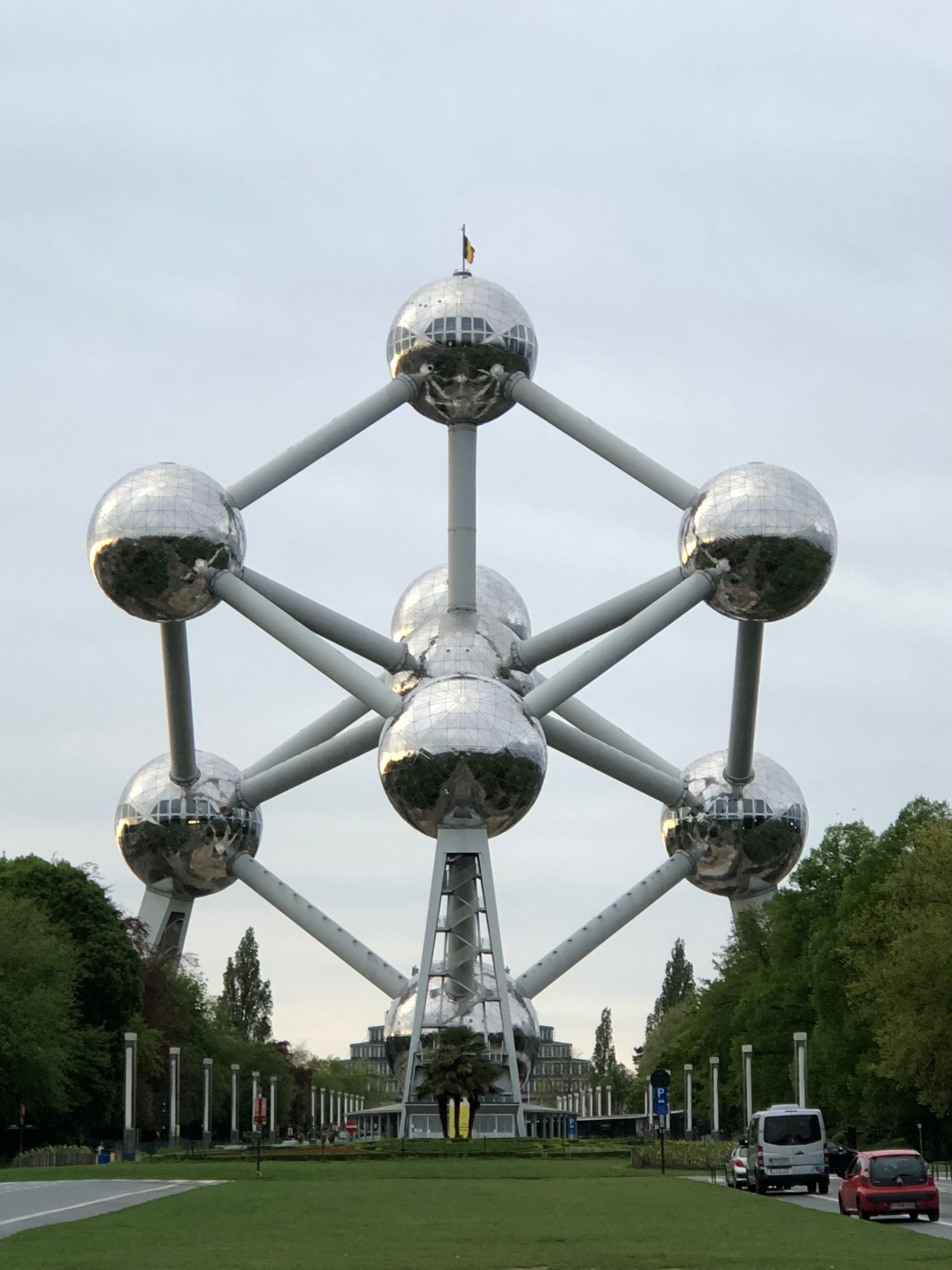
World War II and its aftermath interrupted the sequence of World’s Fairs, but in 1953 Brussels won the bid to host the first post-WWII Expo in 1958. It took the intervening full five years to transform the Heysel Plateau into a space that could accommodate the 44 countries who had elected to participate, as well as the 41,500,000 visitors who would eventual attend the Expo.
A TV tower was originally proposed for Belgium’s pavilion; the government wanted to present themselves as a technological-forward nation and the proliferation of television had certainly intensely impacted the global community during the 1950s. This idea was eventually scrapped in favor of a design by engineer André Waterkeyn and architect brothers André and Jean Polak. Their joint proposal was to build an iron crystal that was magnified 165 billion times, and thus the Atomium was born.
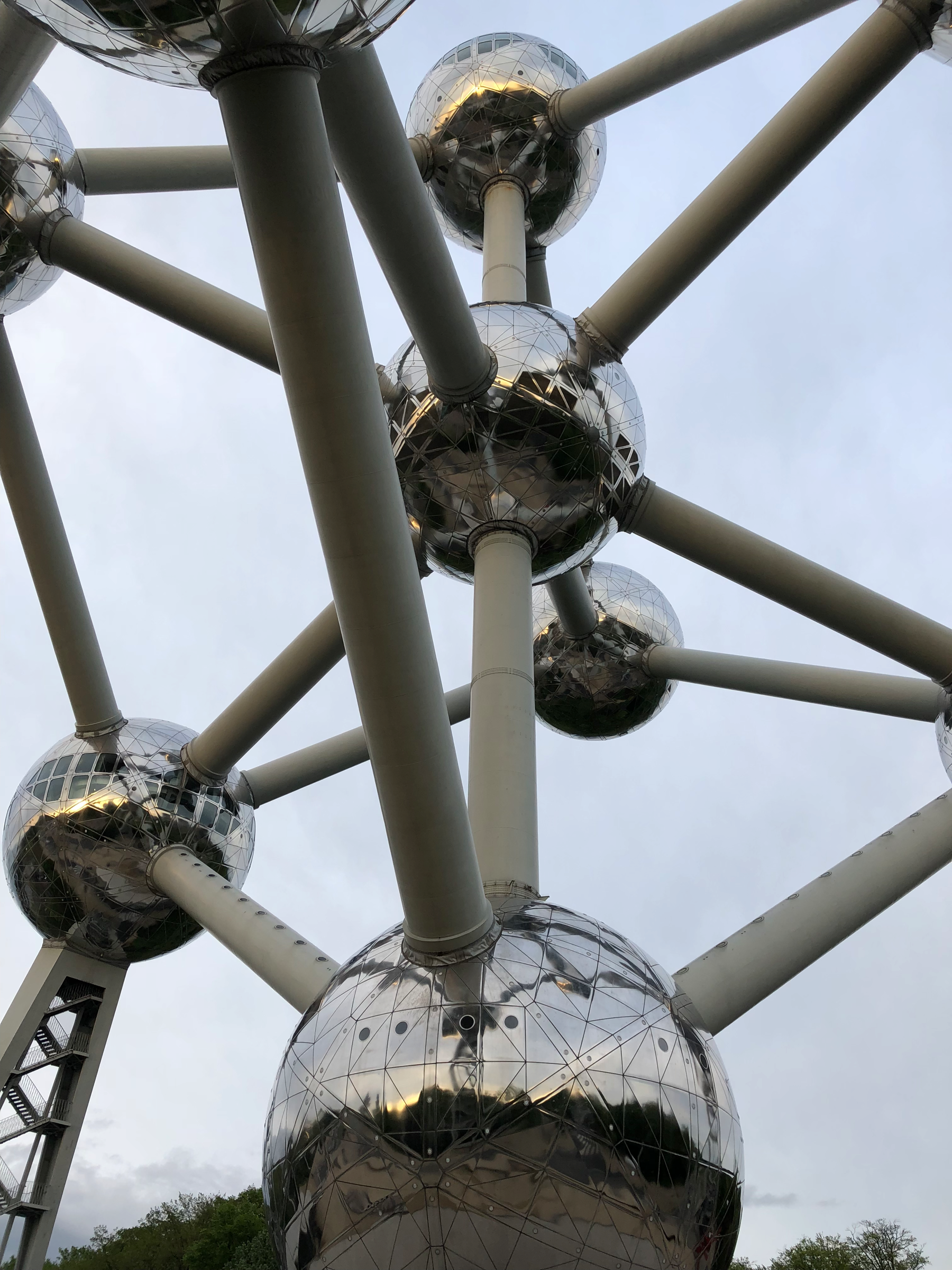
The three designers forged ahead with their theme of “technology in the atomic age,” proclaiming that the Atomium would represent the post-war optimism in Europe, as well as the faith in science and the future that currently prevailed. Originally, a nuclear power plant was meant to be built near the Heysel Plateau to underscore Belgium’s enthusiasm and embrace of atomic energy, but these plans were abandoned after concerns of funding and public safety were raised. The Atomium would have to stand on its own as an atomic symbol.
The Atomium is made up of nine spheres and twenty connecting tubes. The structure stands 102m (334ft) tall and each sphere is 18m (60ft) in diameter. There are two floors inside each sphere, creating three levels for exhibitions. Despite being an iron crystal, the spheres were covered with aluminum plating, thus giving the pavilion its name: Atom + Aluminum = Atomium. It took over nineteen months to complete construction, finishing in the nick of time before Expo 58 commenced.

Initially, the Atomium was meant to stand on its own without any additional support mechanisms. Midway through construction, it became clear that the entire structure would topple over when met with a gust of wind and support posts were added to the three bottom spheres in an effort to steady the Atomium. Only six of the nine spheres are currently open to the public, as the three spheres without additional support have been deemed too unsafe to bear the weight of so many visitors.
When you enter the ground floor, your first stop will be to visit the top sphere, which can only be reached by a glass-roofed elevator. When the Atomium opened in 1958, this was the fastest elevator in the world. One of the escalators inside one of the tubes was also the longest escalator in the world; both of these records have since been shattered, but at the time, these feats of engineering were viewed as marvels of progress.

The top sphere has been converted into a restaurant with a 360-degree viewing platform along the rim. There is a circular panel that runs along the circumference of the sphere with a panoramic photo of what Brussels looked like in 1958 that you can compare with what the cityscape has morphed into today. As you can see, these are the best views in the city.
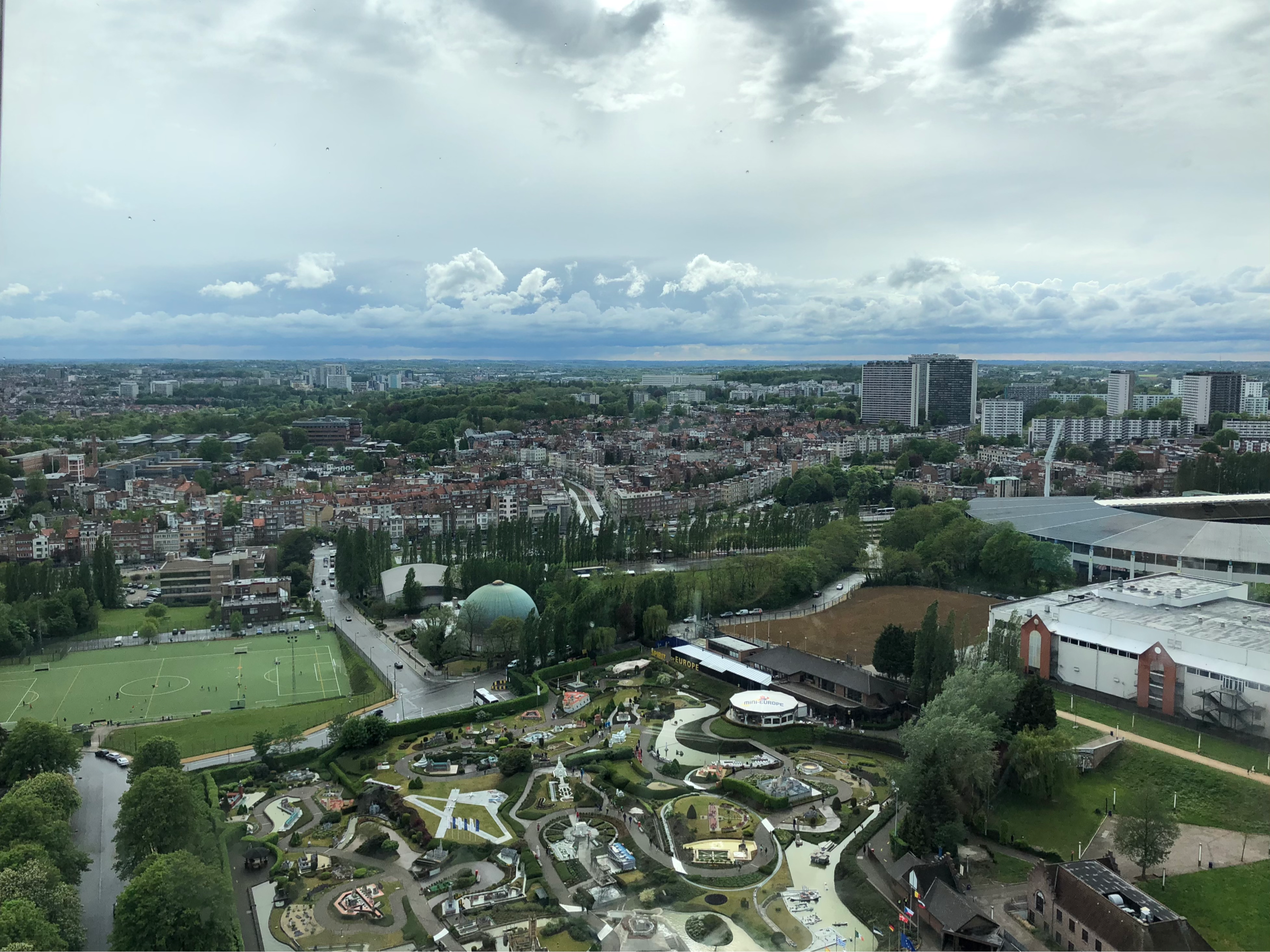
After taking in the views, head back down in the elevator where you can start your exploration of the five remaining spheres open to visitors. Some are connected by escalator, but others are only reachable by staircase, so be prepared that this attraction is neither handicap accessible nor great for people with bad knees! (I believe in total there are more than 250 stairs to go up and down on your visit.)
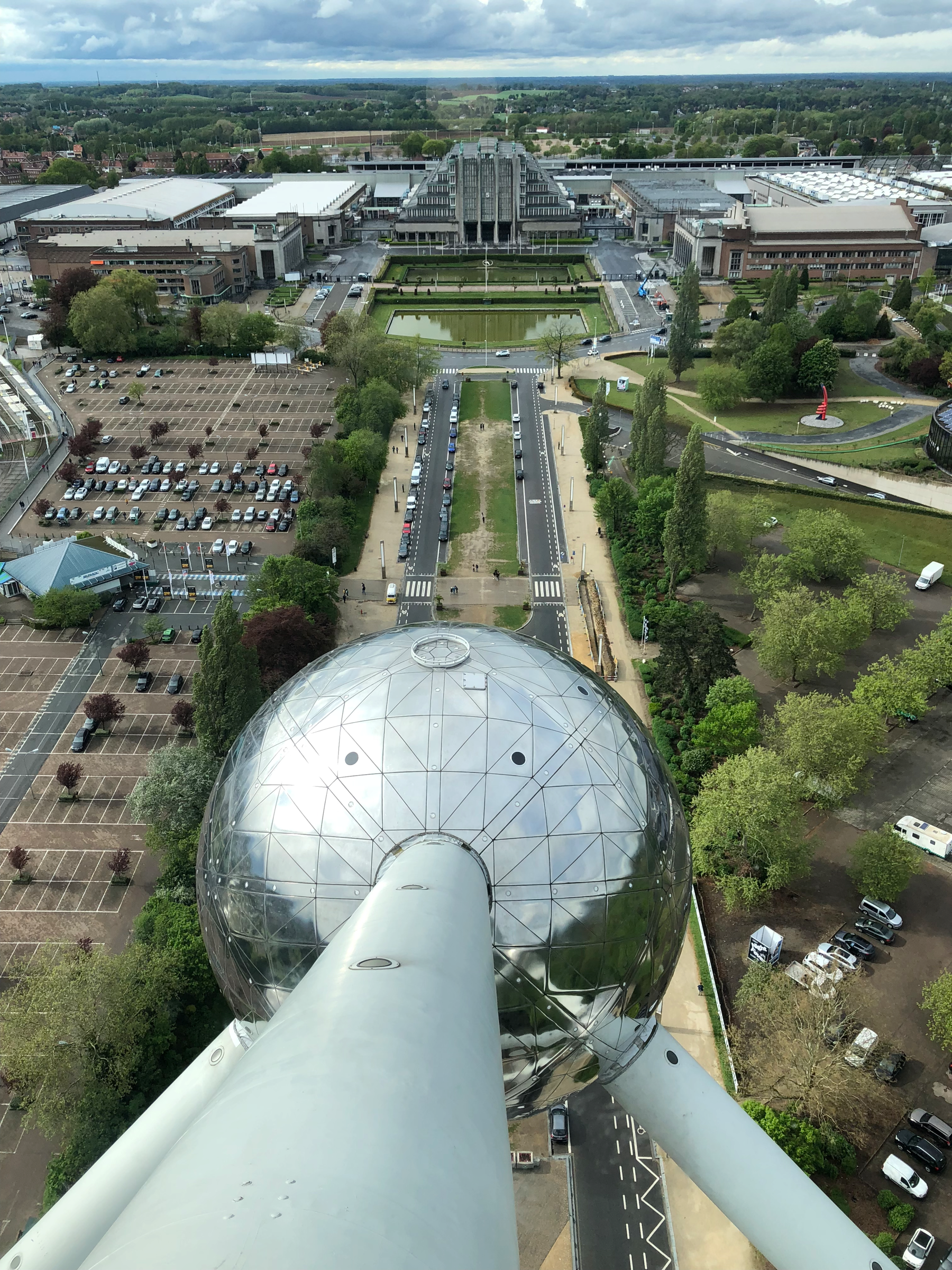

The spheres themselves contain different exhibits detailing the construction of the Atomium, Expo 58 itself, the renovations of the structure and its legacy. (An amusing claim to fame was that Elizabeth Taylor visited the Atomium during the Expo and this was somehow proof that the attraction had met the criterion to become a symbol of the city!) Preparing the plateau for the World’s Fair was quite the undertaking, requiring 15,000 workers to ready all the pavilions. The United States and Soviet Union both demanded that their pavilions be placed directly in front of the Atomium and the rival world superpowers tried to outdo each other with their demonstrations for the duration of Expo 58. The permanent exhibitions are given the rather grandiose title of, “From Symbol to Icon: 60 years of emblematic history.” Suddenly, we must consider the Atomium’s status as an icon as well.
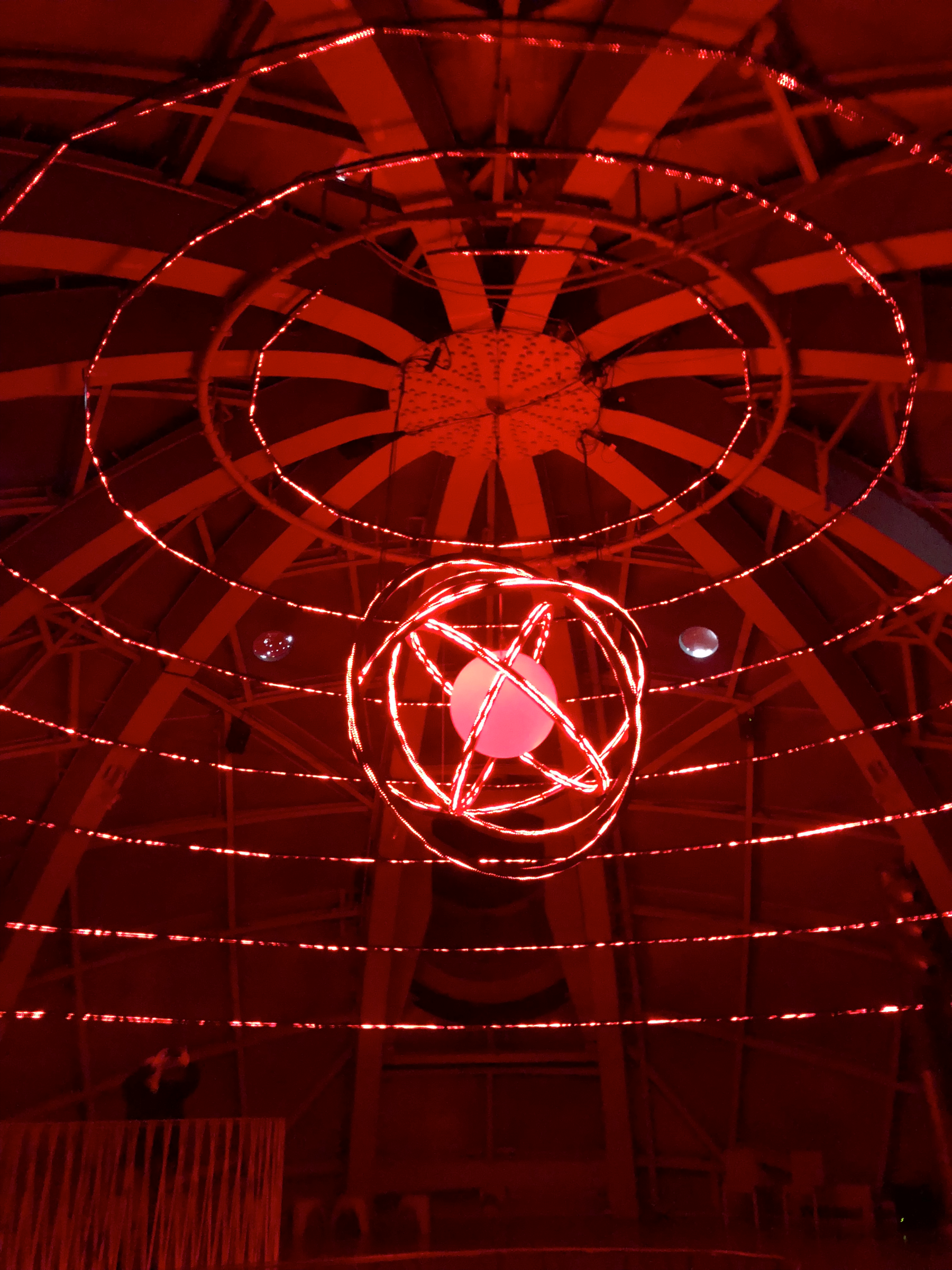
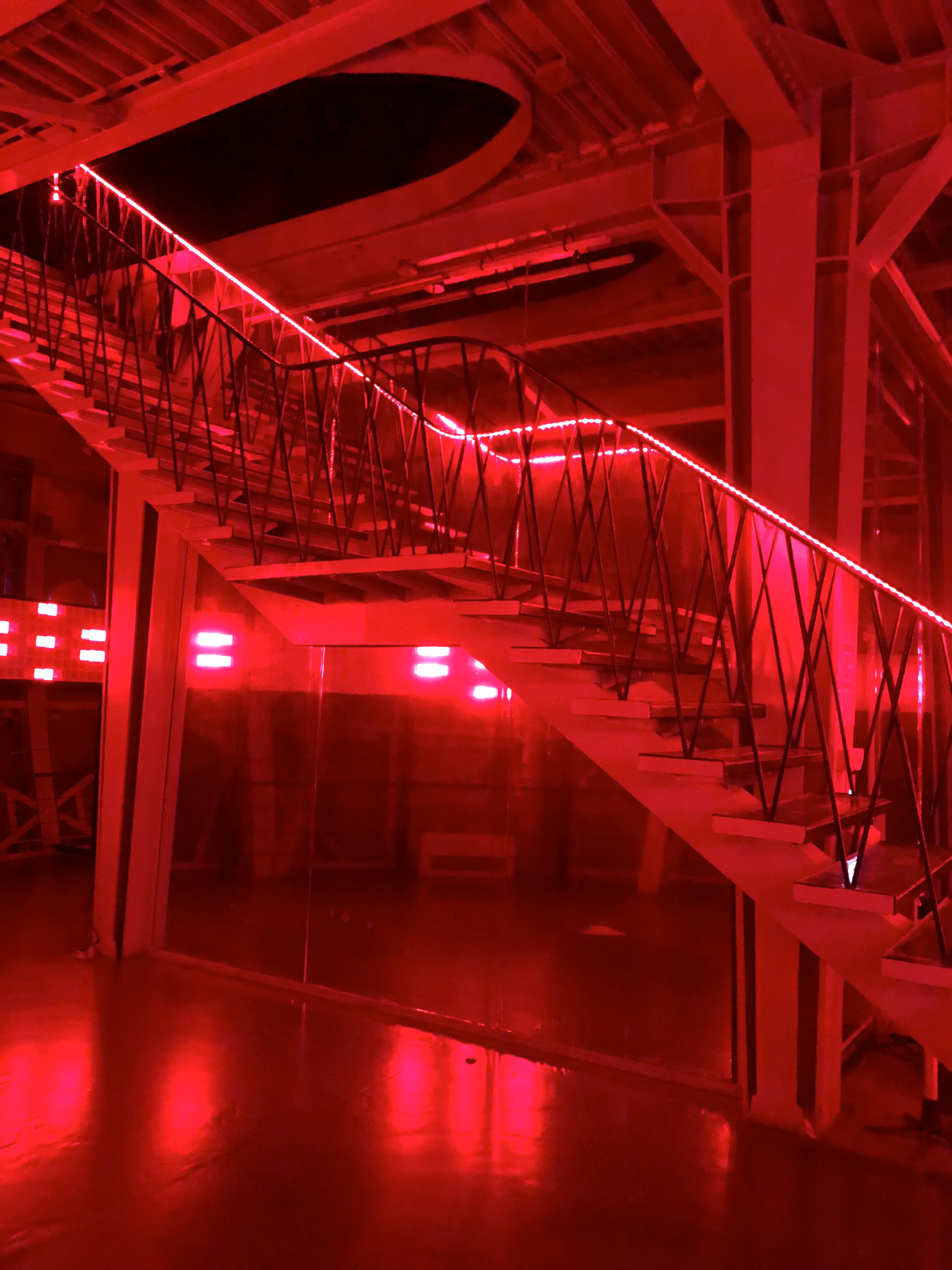
One of the spheres has been given over to rotating contemporary art exhibits, including the one above by Visual System entitled “A Circular Journey.” This installation was less high-brow than the art found in KANAL or MIMA, and more theme-park level kitsch with flashing strobe lights and spoken word voiceovers accompanying the proceedings. The entire exhibit encapsulates a visit to the Atomium, which is equal parts Disney World ride, science museum, art installation and history lesson. A paradox emerged during my visit due to the exhibitions’ desire to continue looking towards Belgium’s technological future, while at the same time maintaining a retro vibe that celebrates the Atomium as it was in 1958.

The Atomium was an instant hit with Belgians and the casual World’s Fair visitor, but the architectural and artistic communities recoiled at the “monstrosity.” Critical assessments of the design were severe. Sibyl Moholy-Nagy, a German art historian, upon viewing the Atomium, noted that it was “clumsy, hollow and pathetically unrelated to the visible forces that might well be the end of us all.” (Ouch!) Chief complaints included that the Atomium was created to laud atomic power, but the only real demonstrations of nuclear power the world had seen up until that point were the bombings of Hiroshima and Nagasaki during WWII. Furthermore, the decision to magnify an iron crystal was called into question, seeing as iron is unable to be used in nuclear reactions in any way. The Atomium wasn’t even made of iron, but aluminum, which at least can be one of the metals to create nuclear power, but for a pavilion extolling science, none of it made sense. Despite these critical drubbings, the enthusiasm of the locals could not be subdued.
The Atomium, like all the other pavilions, was not meant to stand for more than six months. After Expo 58 concluded and demolition of the other nations’ pavilions began, there was an outcry from Brüsseleers, as they’re referred to in local slang, to keep the Atomium up and open for a longer period of time. Over the years, every time the city government announced the structure would fall, the citizens fought to save it until its permanent status as a city attraction was secured.
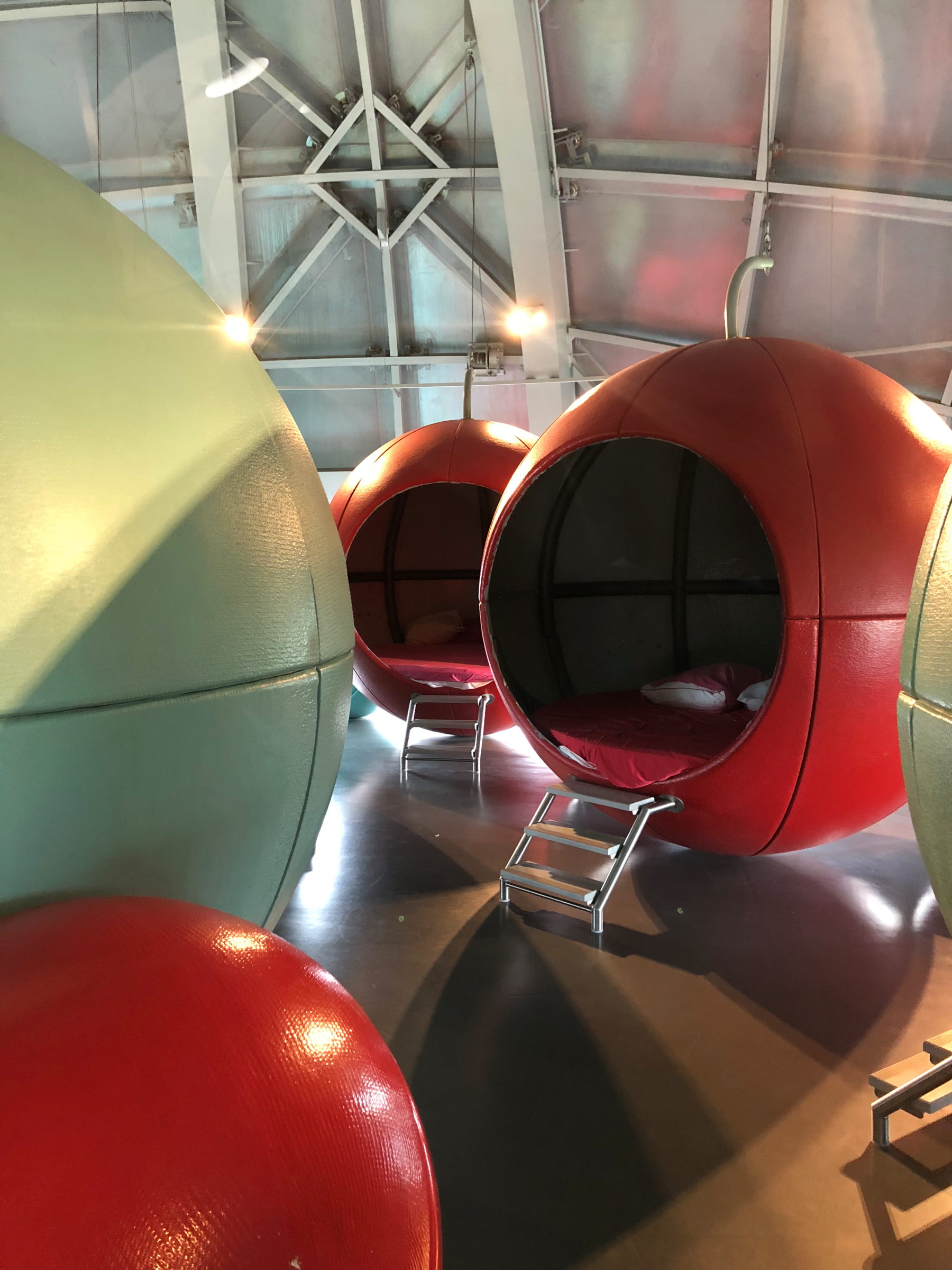
One of the spheres has been turned into a space-age campground of sorts for primary school children to spend the night in the Atomium. (My field trips growing up were never this cool.)
Although the Atomium had been spared, the government didn’t divert any resources for its upkeep. By the onset of the 21st Century, the structure had fallen into a sorry state. In 2004, the Atomium was closed for two years while necessary improvements were carried out. The entire installation was stripped of its aluminum plates (which were auctioned off) and replaced with stainless steel coverings. Stainless steel is, of course, most comprised of iron, finally allowing the Atomium to become the iron crystal it was meant to be.
Thousands of LED lights were added to the stainless steel plates, allowing the “electrons” of the iron molecule to be illuminated at night. I was urged to wait until after dark and not miss out on this effect as the light show doesn’t run during daylight hours. The only problem is that the Atomium closes at 18:00 and LED lights don’t switch on for about another two hours, leaving you stranded on the Heysel Plateau with time to kill.
Monument Adolphe Max
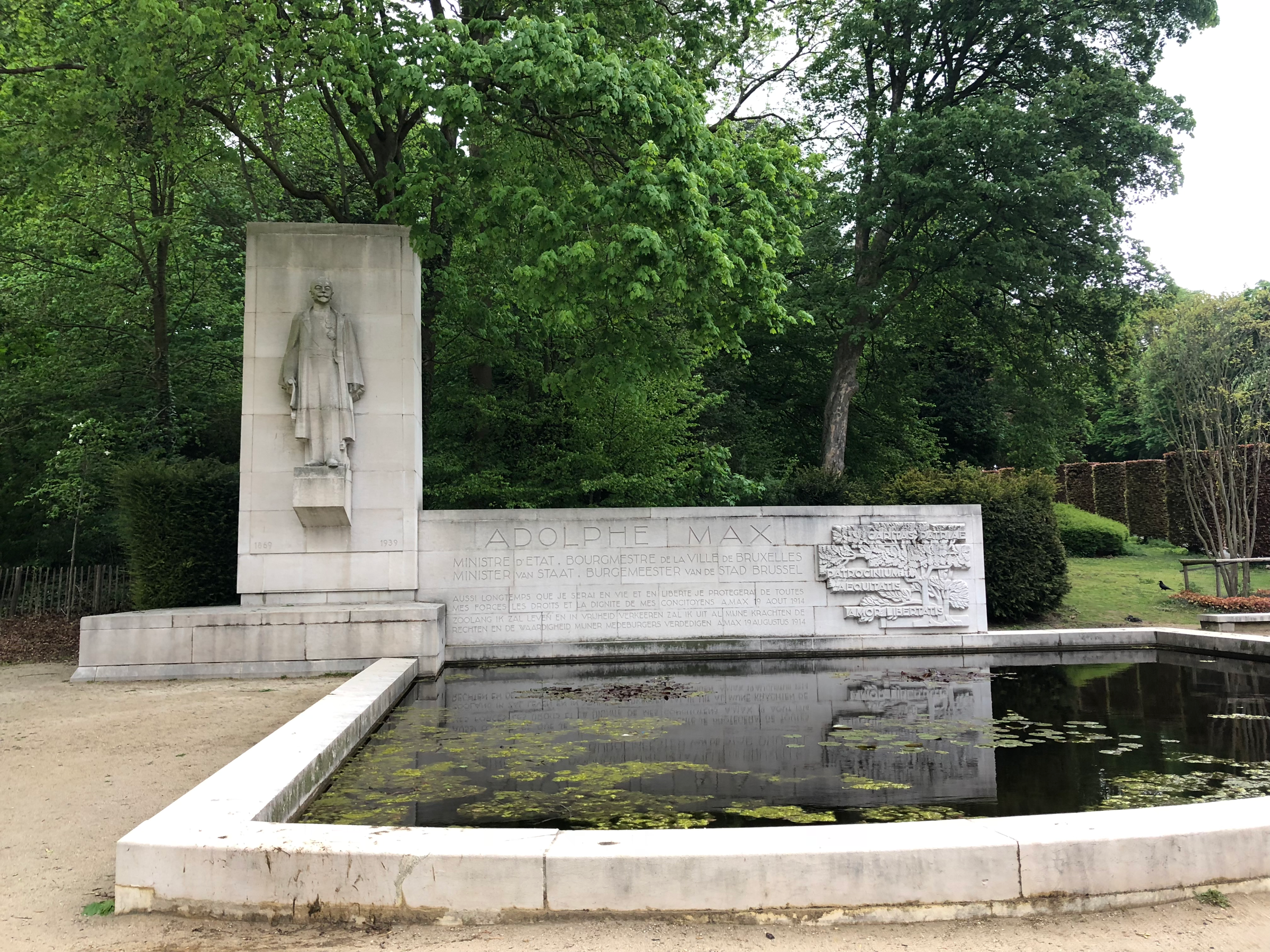
Below the plateau is a charming park and monument dedicated to Adolphe Max, who served as the Mayor of Brussels from 1909 until his death in 1939. Max was a liberal politician who tirelessly fought for universal suffrage in Belgium, although it was not achieved until after his death. He was also instrumental in bring Expo 35 to the city and financing the Palais des Expositions. The monument, which was erected in 1956 in preparation for Expo 58, contains one his most famous quotes spoken at the onset of WWI in 1914: Aussi longtemps que je serai en vie et en liberté, je protégerai de toutes mes forces les droits et la dignité de mes concitoyens (As long as I live and am free, I will protect with all my might the rights and dignity of my fellow citizens).
You’ll also notice, if you look closely enough, that there’s a little dog at Max’s foot. Max owned a long line of terriers; he renamed each successive dog “Happy,” and Happy was always by his side. Once, while dining at a fancy hotel, Happy infamously leapt from Max’s lap and onto the neighboring table, running off with a whole chicken in his mouth. Happy became such a beloved fixture in Brussels politics that he was incorporated into Spirou comics and had to be immortalized alongside Max’s statue.
Parc d’Osseghem/Ossegempark
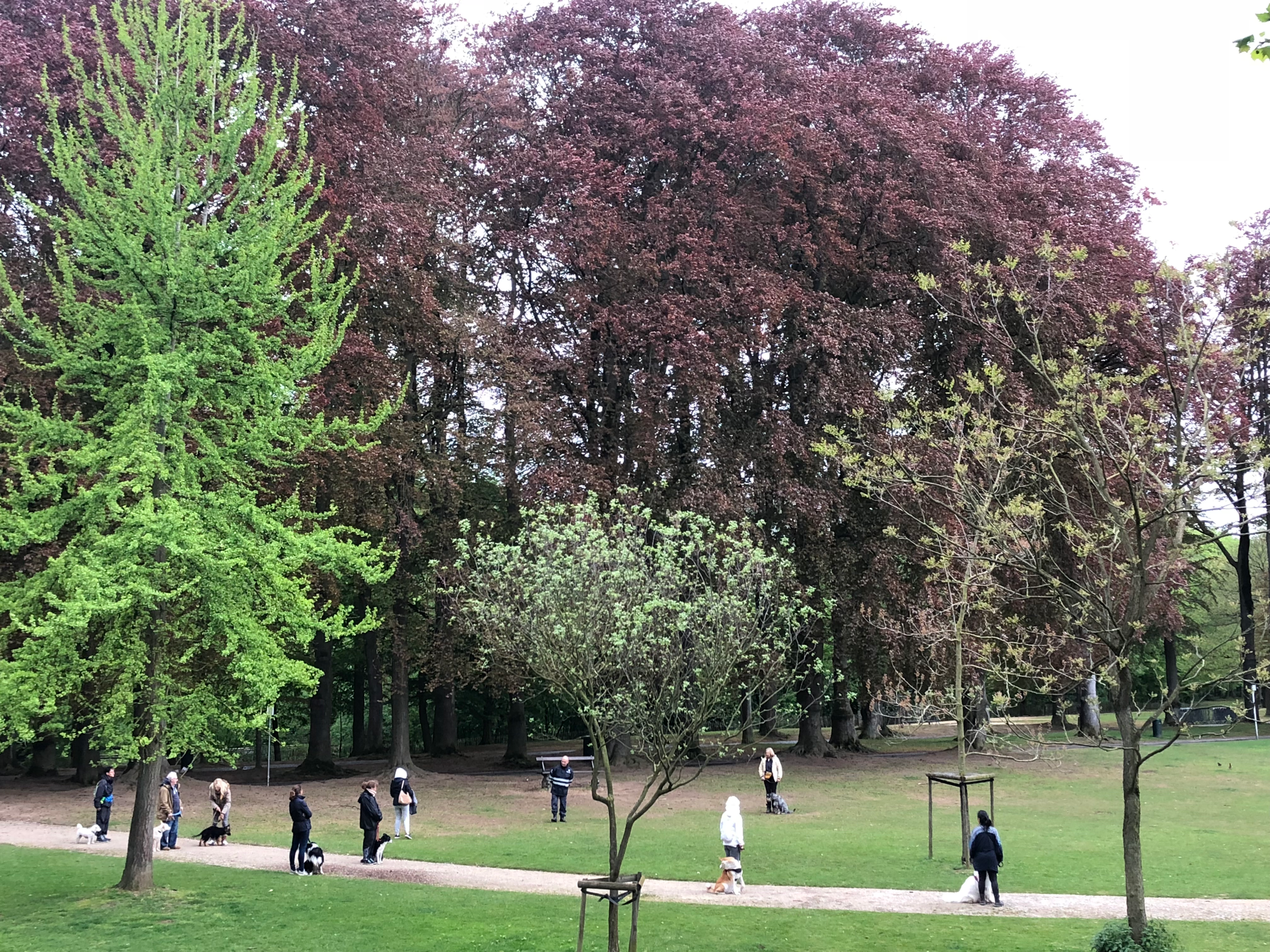
Adolphe Max’s Monument marks the entrance to Ossegempark, which I soon learned is home to one of Brussels’ largest dog training programs. I had some fun watching the mischievous pups attempt to be reined in by their patient owners. Although the spring weather in Brussels was warm during the day, I suddenly wished I had a jacket as dusk fell in the park.
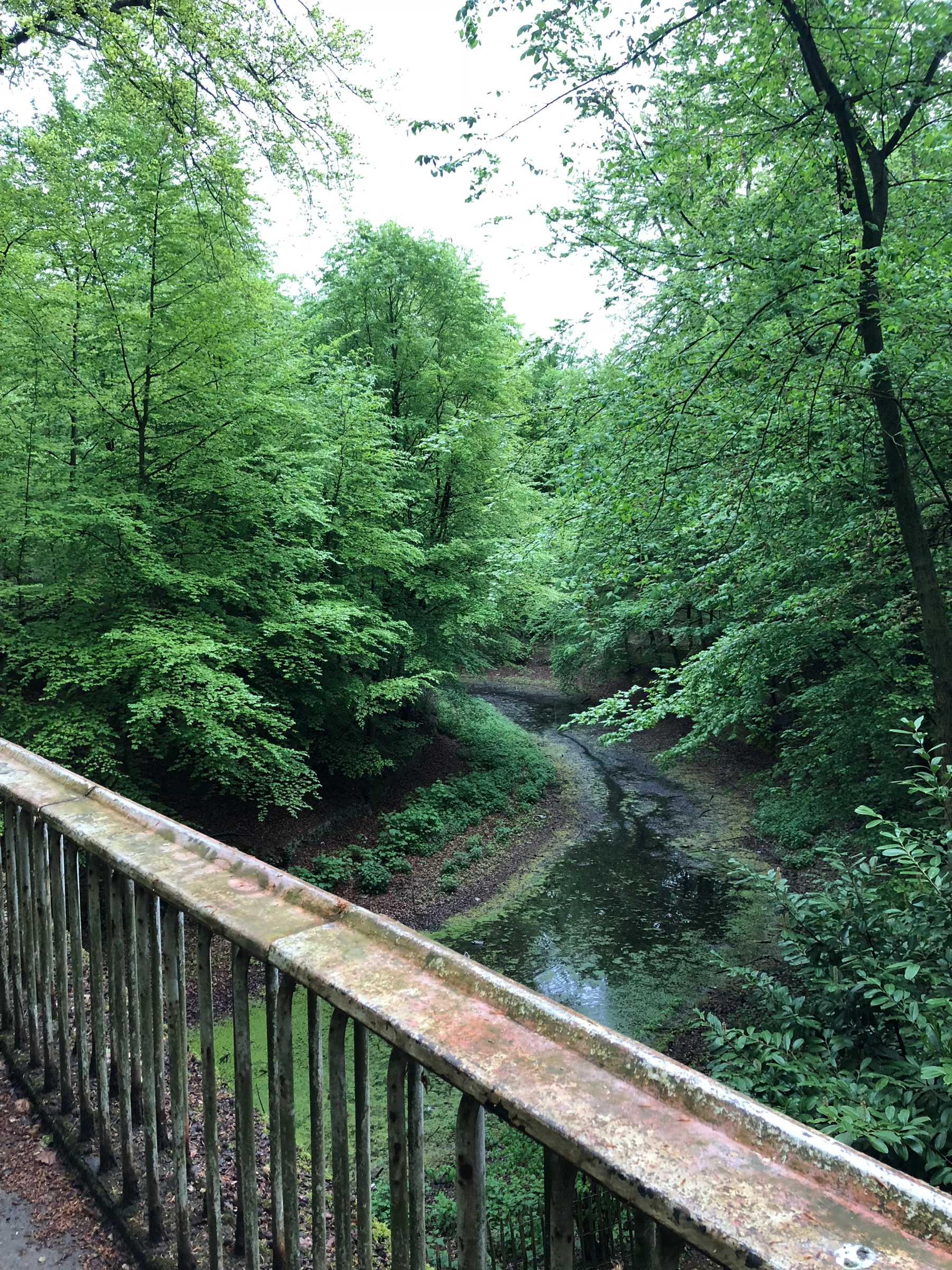
I hadn’t planned on remaining in Laeken for dinner, but if I wanted to see the light show, I was going to have venture down into the neighborhood to find some food. Sometimes when we travel there is too much stress put upon eating local food. Of course, you’ll want to try some culinary delights endemic to a region, but equally illuminating can be how one ethnic group prepares another ethnic group’s cuisine. Try some Indian food in Finland or Chinese food in Guyana. Some will turn their noses up at this suggestion, but seeing how the Finns modify Indian to suit their tastes and jibe with local ingredients can be just as telling as eating a Finnish dish.

With that in mind, I hit up a Thai restaurant in Laeken and enjoyed this Belgian version of Pad Thai. Did it taste like Thai food in Thailand? No, but it was delicious all the same! My meal warmed me up and I had a pleasant chat with the waiter about his perceived joys of living in Laeken over the crowded and congested inner city.
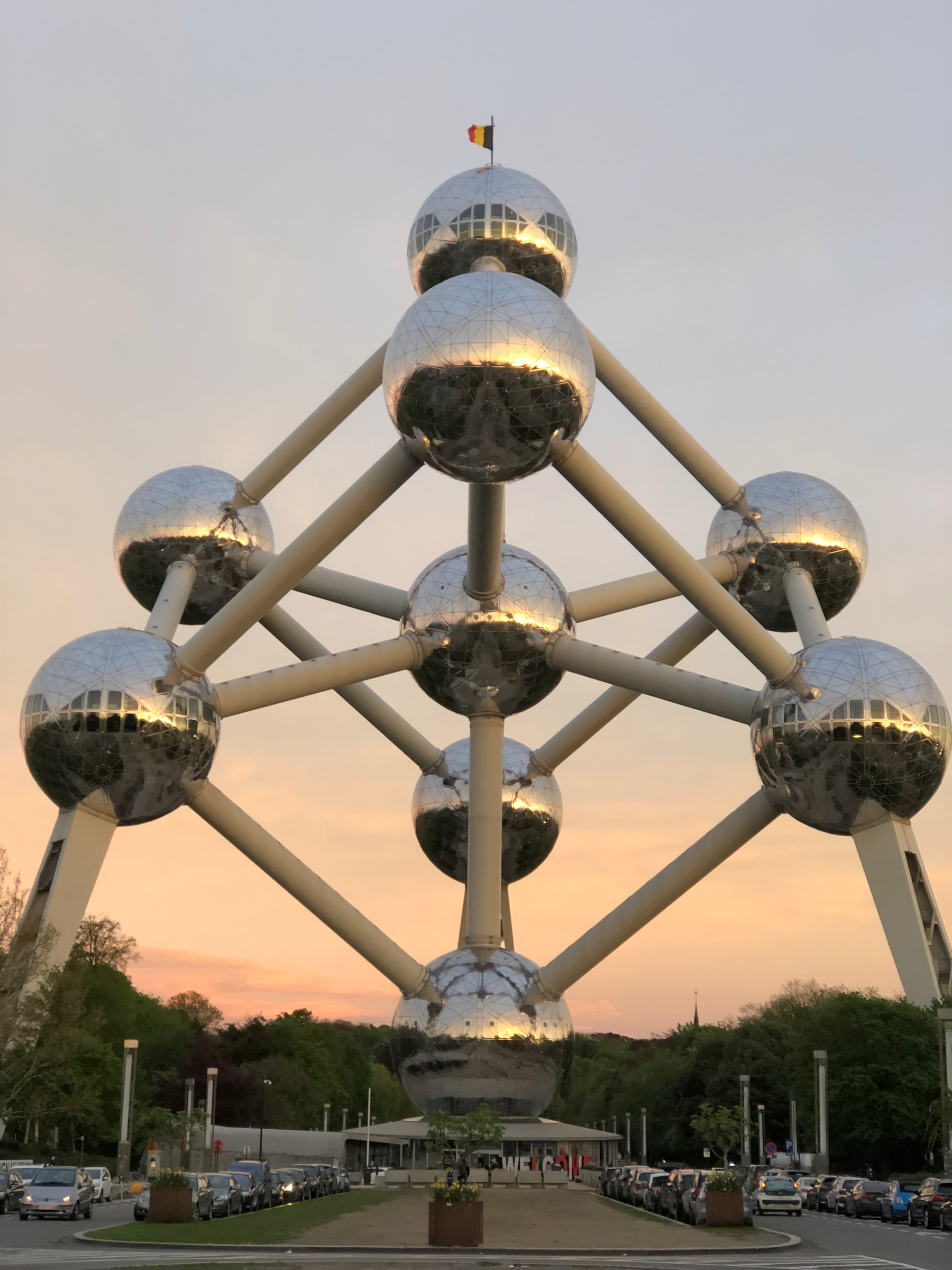
Back at the Atomium the sun was beginning to set and I decided to plant myself at a certain distance away on the plateau and snap a photo every ten minutes as the fading light bounced off the spheres and tubes. This also gave me some time to reflect on my time in the capital and I found myself becoming resentful of Brussels’ reputation as a dull pitstop on the way to Antwerp and Ghent. The city has a lot more to offer than a Belgian waffle at the Grand Place and you don’t even have to look that hard to uncover its treasures. Brussels is teeming with art, whether it’s splashed on the side of buildings or inside the former home of Magritte and a Citroën garage. Likewise, history and a wealth of architectural styles can be discovered walking the streets or exploring the capital’s many green spaces.
And lastly, what to make of the Atomium. Does it live up to its “symbol” status? While no one can argue it has the name or visual recognition of the Eiffel Tower, it certainly has won over the hearts of the Brüsseleers and that’s enough for me. Unlike the initial critical analyses that have long been forgotten, what matters most is that the Atomium has proven its importance to the people and has acted as a unifying symbol, whether French, Flemish or otherwise.
This will be my final post for this stop on my Benelux journey before moving on to Luxembourg, so let me take this last moment to urge you to give Brussels a fair shake as we watch the Atomium to fade into the night…
